In 2021, the NWSL welcomed two new names to the league in Racing Louisville and Kansas City NWSL (now known as Kansas City Current), but both struggled to match the other sides in the league and ended up trying not to finish bottom. 2022 has seen two sides introduced in California, namely Angel City and San Diego Wave, and both have started with plenty of positivity.
However, whilst Angel City have put on some pleasing performances, it is the Wave who have attracted the most interest, with their brand of football under former Manchester United Women manager Casey Stoney seeing them create numerous goalscoring chances whilst simultaneously being tough to beat, and this tactical analysis will break down the on-field reasons for their strong start to the regular campaign.
In the final third
Given that San Diego have become well-known for their attacking football in recent weeks, it makes sense to start with their final third play, and what is critical to note is that it is more than just a goalscoring threat that has made them such a dangerous team.
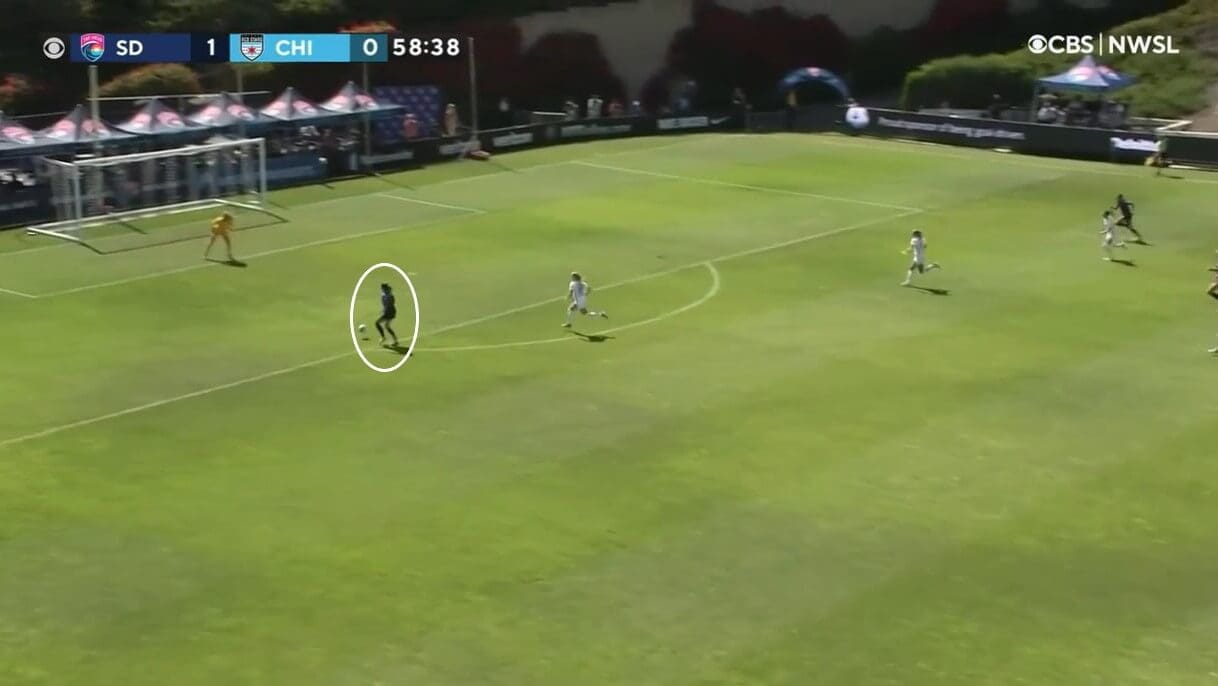
However, the analysis will begin by focusing on their main striker, Alex Morgan, because she has undoubtedly been their key figurehead in attacking situations. The USA forward spent the first half of the 2020/2021 WSL season at Tottenham Hotspur Women before switching to Orlando Pride for the 2021 NWSL campaign, but didn’t really show her full capabilities at either club, with there being a feeling that she had been restricted in what she was able to do. However, at San Diego, she appears to have been given one job, which is to score goals, and we have seen her at her very best so far in 2022 as a result, finding spaces and punishing opponents’ mistakes.
In this example, she has positioned herself outside the Chicago Red Stars defensive line, with time to control the ball and shoot at goal, and getting into these areas is a result of the new freedom she seems to have been given by Stoney. As a result, she is currently the NWSL’s top scorer, with six goals to her name, whilst San Diego as a team have netted an average of 1.6 goals per game and their expected goals (xG) value is 1.99. Therefore, there is a clear emphasis for them to score goals and create problems in the final third.
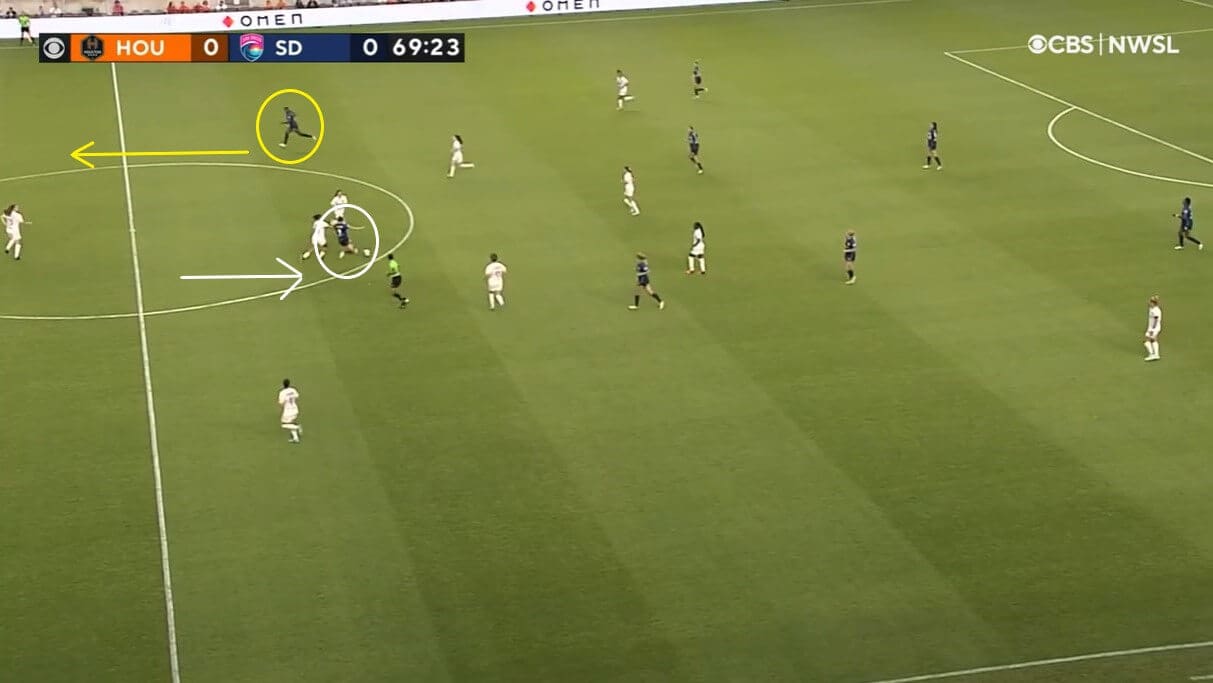
However, what has also been clear about the Wave’s attacking play is that they have different types of strikers in their squad, meaning that they can mix their attacking play up depending on who they are facing. Here, against Houston Dash, England striker Jodie Taylor has dropped back to receive the ball in a deeper area of the pitch, making it easier for her team to find their attacking outlet.
Nevertheless, to balance this out, San Diego need their midfielders and wingers to get forward and create passing options behind Taylor, just as Amirah Ali is doing here. She has so far proven to be a key player for the Wave in the opposing third, with good awareness and an ability to fill holes when they appear. Therefore, whilst the strikers are important, the support that they get from the midfielders is another reason that San Diego have posed such a major threat in their five league games to date.
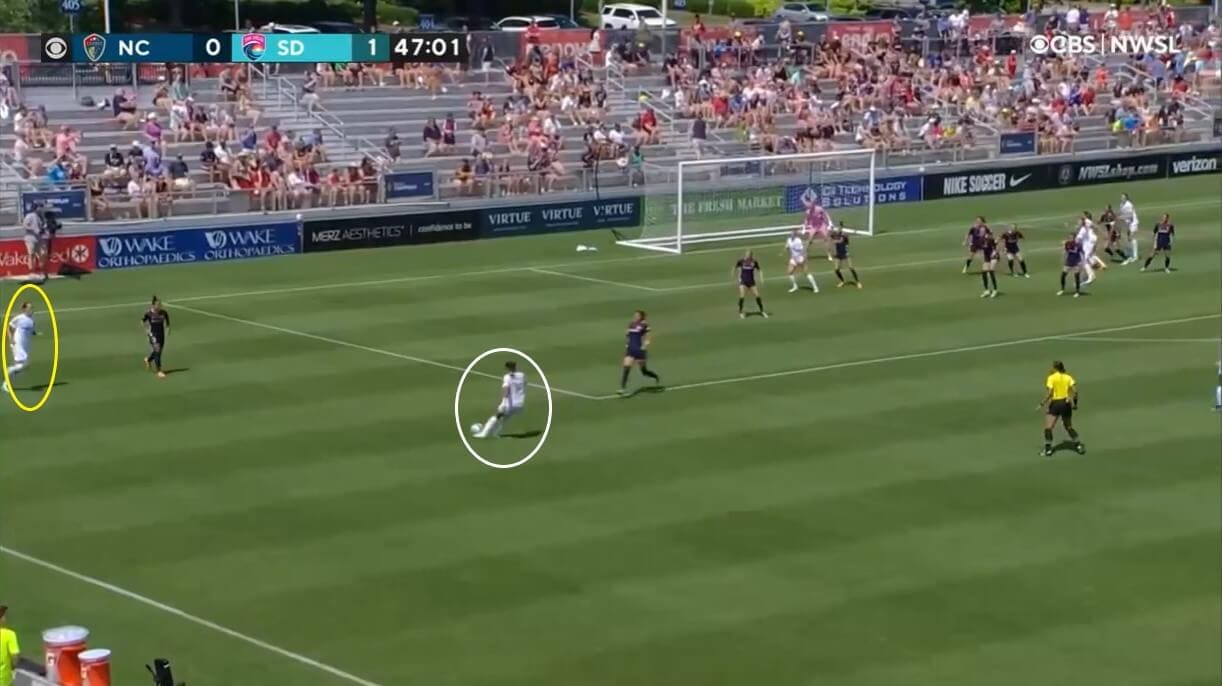
The fact that Stoney wants her team to always play forwards whenever they have the ball was reflected in her recruitment when building the squad, as her two first-choice full-backs, Christen Westphal and Tegan McGrady, are both attack-minded players who naturally drift up the pitch and support offensive play.
This means that the Wave can create occasional numerical overloads and also wait for the right time to cross the ball into the goal area, giving them a better chance of converting their opportunities, and the link-up play between McGrady and Australia midfielder Emily van Egmond here against North Carolina Courage highlights that.
Essentially, their offensive tactics only work properly if everyone plays their part, which shows how San Diego can create chances in different ways and work as a team, and that is perhaps the most important point to consider when analysing their attacking play.
Midfield roles
That teamwork element comes into consideration again when looking at their ball progression around the pitch, with San Diego Wave’s midfielders playing a critical role in the forwards’ productivity by getting into areas where they can affect the game.
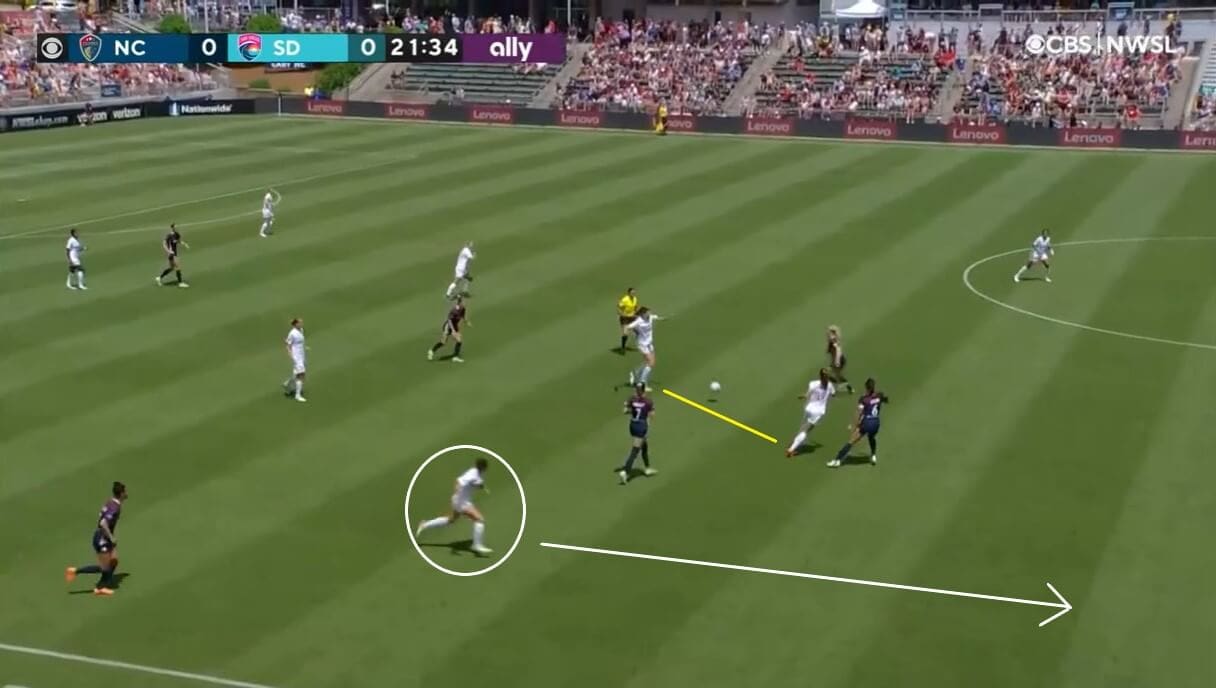
Often, this can simply come down to keeping the ball in tight spaces and waiting for the right passing option to become available. In this case, Taylor, who played alongside Stoney for England, has made a run up the wing and given her teammates a target to find, with the midfielders’ awareness allowing them to play the ball in her direction. This one move takes the three Courage players next to them out of the game and creates an opportunity in the final third, demonstrating how San Diego’s attacks often start from hard work done by the midfielders.
This ability to keep control of the ball has led to Stoney’s side enjoying more possession than their opponents in their five regular league games so far, with 50.62% averaged per match, and it is clear that she wants her team to be proactive and look to create their own opportunities, rather than sitting back and waiting for their opponents to make a mistake.
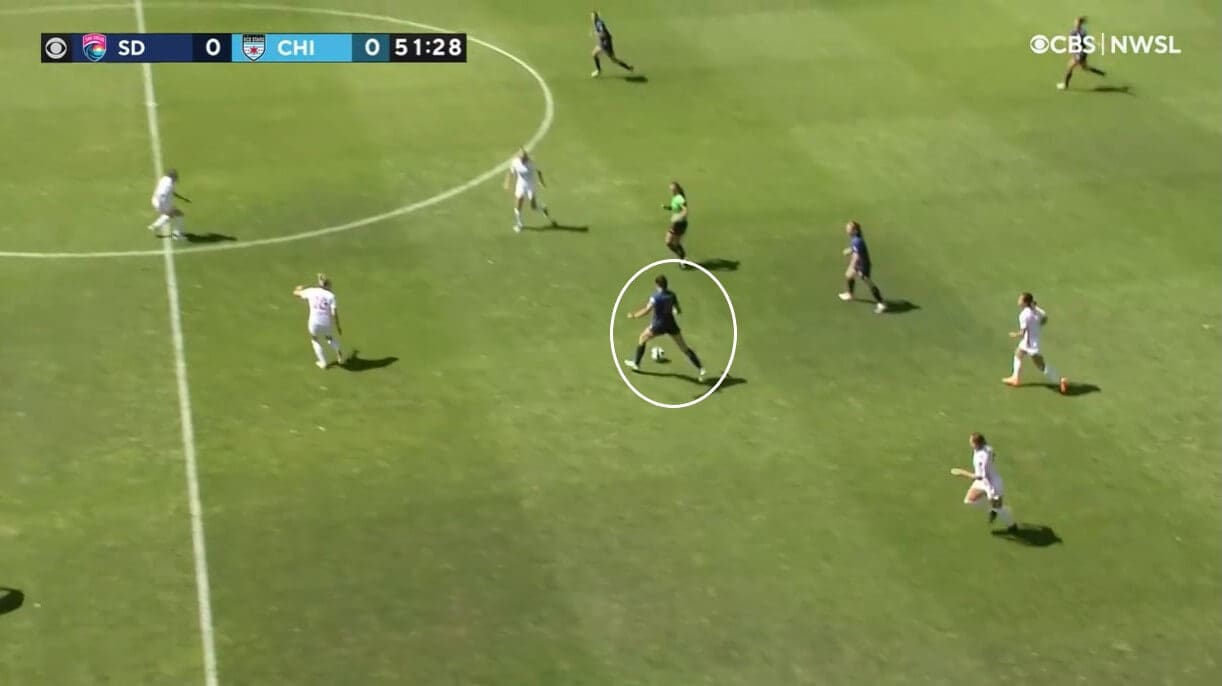
One key name to mention in the central third is Taylor Kornieck, who has become San Diego’s main playmaker during their recent matches, with her box-to-box abilities proving instrumental in San Diego’s ability to transfer the ball through the thirds. Here, against Chicago, she has time to turn and look for a teammate ahead of her, which links back to the previous point about Stoney wanting her team to always play forwards when they have the ball.
It has already been mentioned that San Diego like to play through the thirds when in transition and Kornieck has enabled them to bring that idea to life on the pitch, with their 74.2% passing accuracy reflecting how successful they have been in keeping the ball and not allowing their opponents to put pressure on them.
In many ways, this comes down to Stoney’s simple but effective footballing ideas, in that she has asked her players to focus on specific jobs during games, such as scoring goals for Morgan and link-up play for Kornieck. There are no complicated ideas being thrown around the team, just simple instructions and tactics, and this has been key in ensuring that every player knows what to do and where to be at each moment, leading to their free-flowing play.
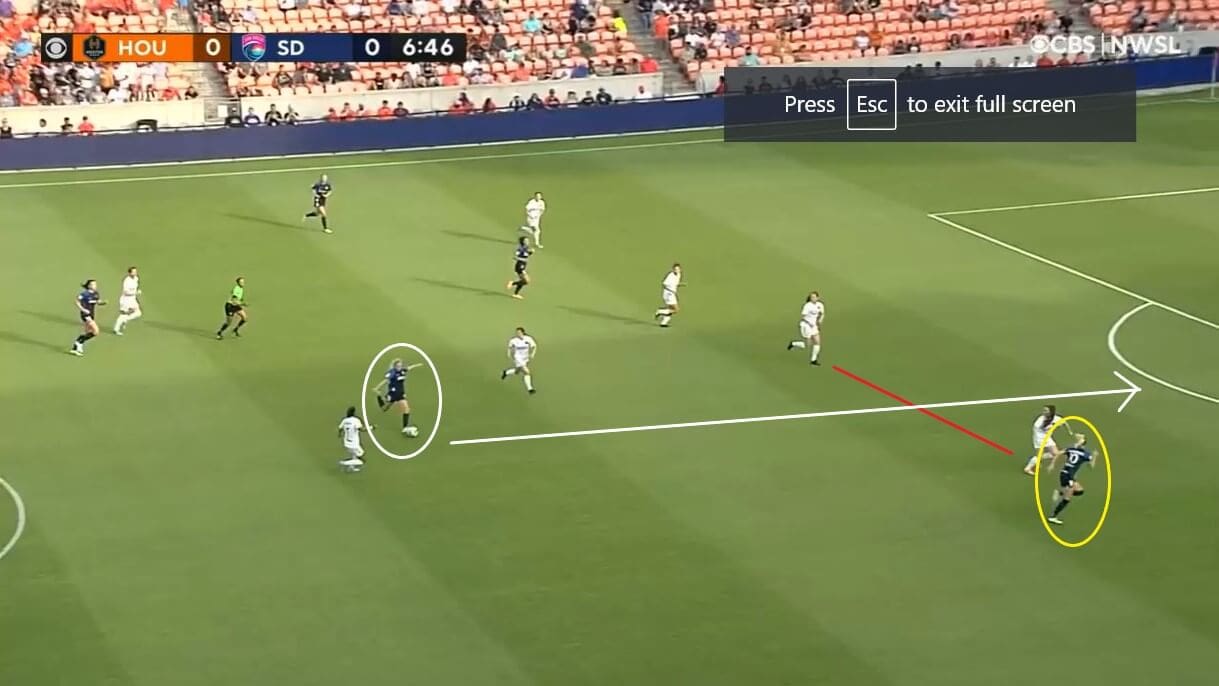
Another thing that Stoney has spoken about often in press conferences this season is that she wants her team to have a basic desire to regain the ball as soon after they lose possession as possible, and this comes down to their ability to press and close down. Given that they have won 41% of their offensive duels so far, it does appear that this is something that the players have bought into, and the midfielders have a really important role in making it happen.
Normally, Kornieck is the one who makes tackles and sets up attacks, but it is Belle Briede who wins the ball here. Nevertheless, the principle remains the same, with Briede instantly looking forwards and seeing the gap in Houston’s back line, playing the ball through for former Real Madrid Femenino and Bayern Munich Frauen forward Sofia Jakobsson to get on the end of.
Since joining the team in January, the Sweden international has proven to be a mobile forward who can drop back or play on the shoulder, making her a difficult player for opponents to contain. With Morgan not available here, she has provided Briede with an instant attacking option and the fact that the Wave have a 54.9% accuracy for passes into the final third shows how they have often used their target players well.
Defensive play
Whilst their attack has been impressive during their debut season, it must also be noted that they have the joint-best defensive record in the league (along with Angel City and Houston) two goals conceded, and their goal difference of +6 is the best in the NWSL at the time of writing. Therefore, a large part of their success needs to be attributed to their defensive setup, which is what this scout report will now focus on.
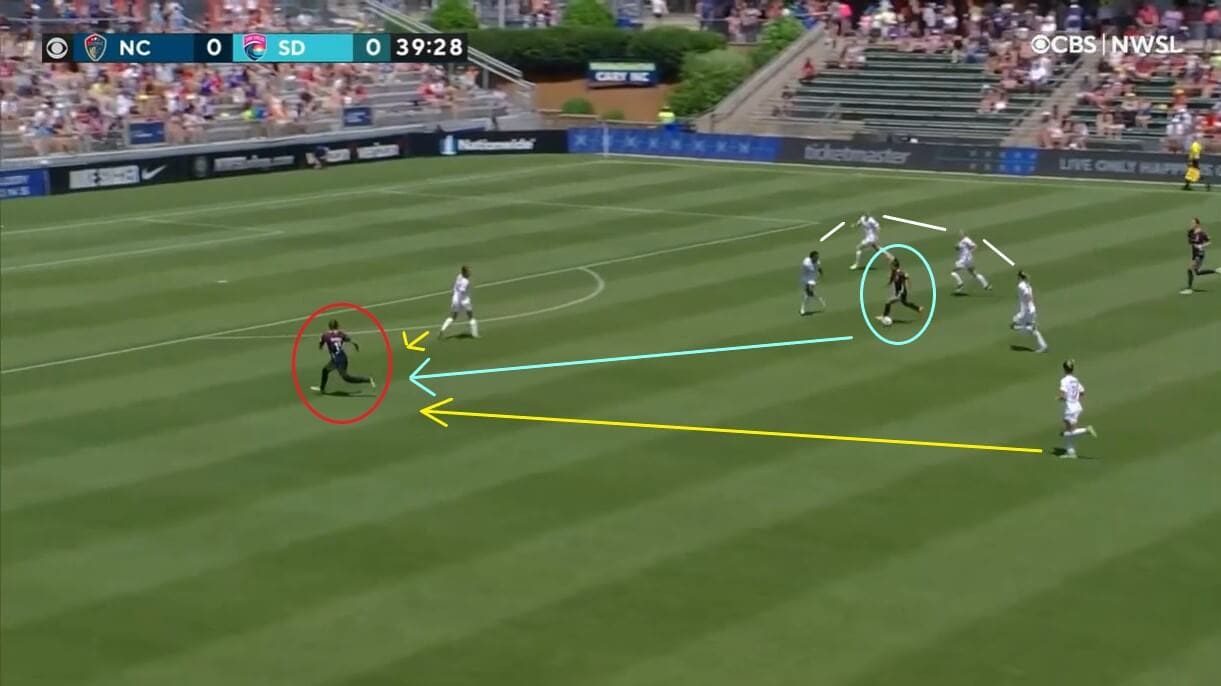
The most noticeable aspect of their defensive play is that they work together to surround opponents and dictate how they play the ball, with Brazil playmaker Debinha unable to advance forwards here and therefore needing to send the ball towards Jaelene Daniels, in the red circle. However, the problem is that San Diego know that this is the direction that the ball will go in, meaning that they can get players moving towards Daniels to put pressure on her as soon as she receives it.
When analysing why the Wave have been so difficult to score against, this is undoubtedly a major point to consider, and the fact that they have only conceded 0.4 goals on average per game highlights their robustness at the back. On this occasion, Courage left-back Carson Pickett did manage to get through former Portland Thorns right-back Westphal, but the fact that her break came after several phases of play shows how opposing teams have had to work hard to create goalscoring chances against them.
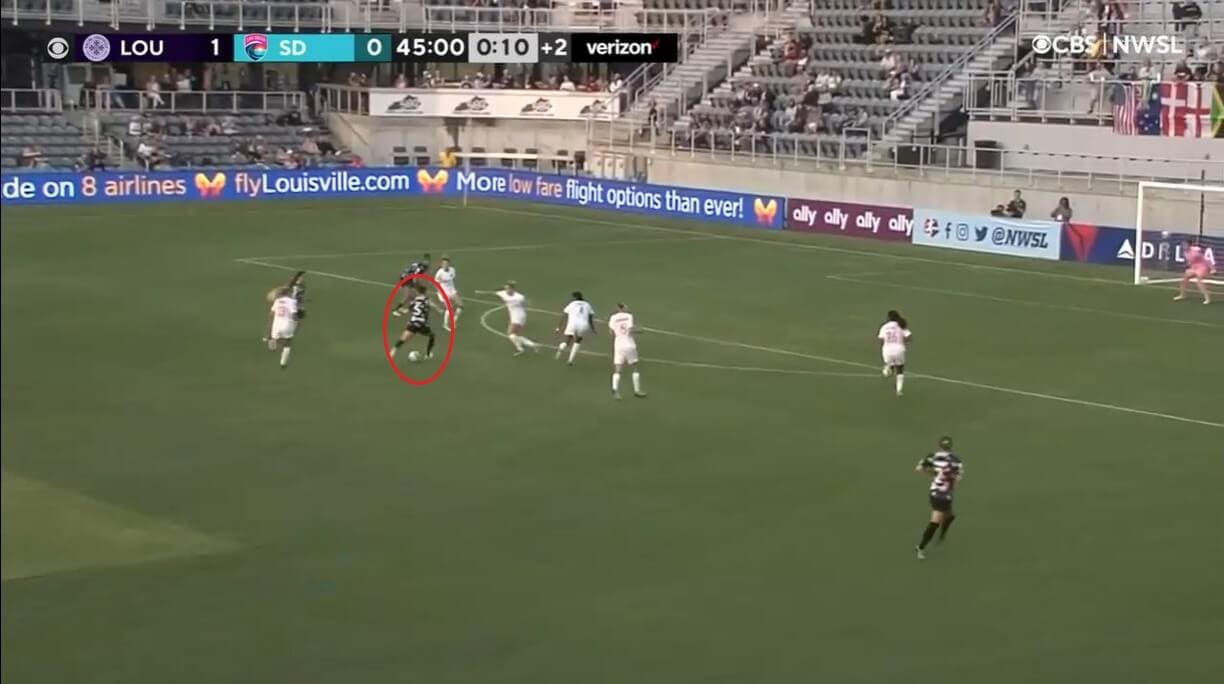
This is a similar situation, in that San Diego players are once again getting around the ball and limiting what Louisville can do with it. However, on this occasion, versatile forward Cece Kizer doesn’t have an open option either side of her to pass to, meaning that she can’t do as Debinha did in the previous example. As a result, her only option is to take the shot on goal from this position, which is earlier than she would have liked, and the effort subsequently misses the target.
The key point here is the lack of time that Louisville had to build their attack, with San Diego making it difficult for them to create options around the ball and try to play through the Wave’s back line. Therefore, what we can take from this is that teams have not been able to advance as close to San Diego’s goal as they have done against other sides, which is potentially a reason for the Wave’s low goal concession rate but is definitely a factor in their defensive solidity to date.
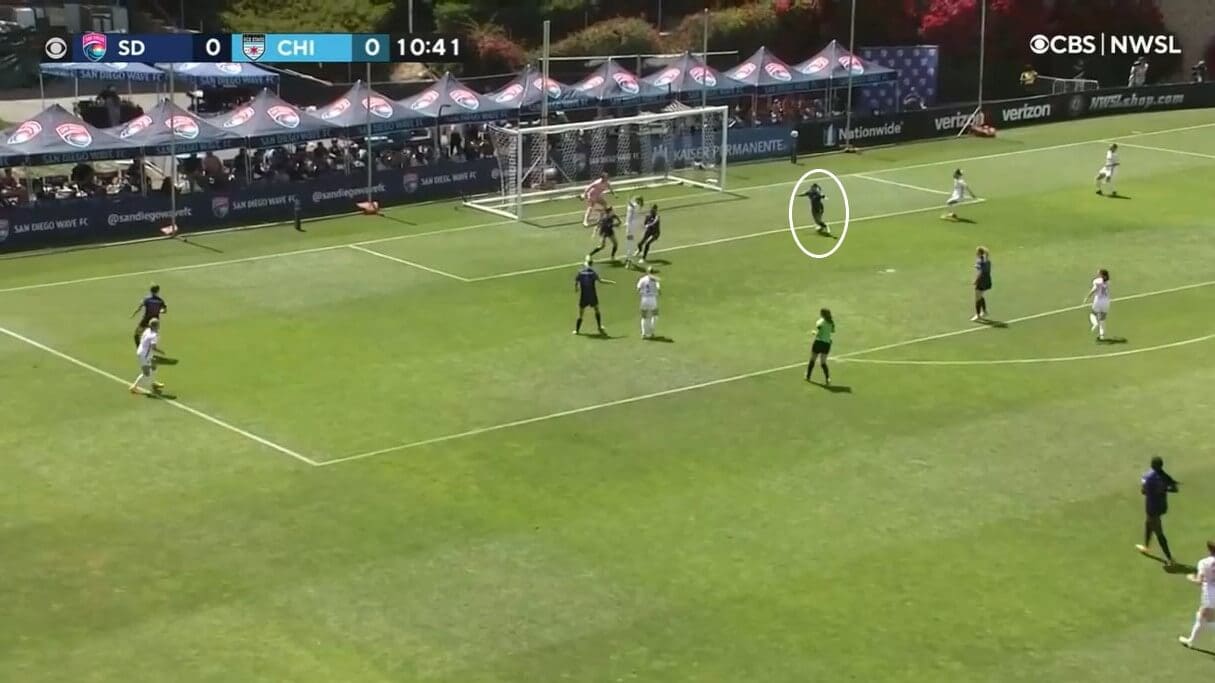
When the ball is allowed to come into the box from a potentially threatening area, San Diego’s setup means that they have a way of ending attacks and again making it hard for their opponents to convert opportunities. The focal point of their defensive line is one of the central defenders, normally Naomi Girma, who is in the white circle here. She has tended to be an anchor for the rest of the defensive line, holding her position and never moving too far from the goal, which ensures that there is no space left open that opponents can target.
Once in this position, Girma’s role becomes making interceptions and blocks and generally slowing opponents down in any way that she can, and the fact that San Diego have won 56.5% of their defensive duels, 54.6% of their aerial duels and made 44.8 interceptions on average per game shows how crucial this role has been to the whole team being difficult to beat.
Conclusion
In conclusion, this tactical analysis has looked at San Diego Wave’s attacking and defensive play, finding the reasons for their promising start and rise to the top of the NWSL table. Whilst the scout report has focused on several different aspects of their play individually, what has become apparent throughout the analysis is that Casey Stoney has implemented an air of positivity in her new team, having stated in pre-season that she was encouraging mistakes to be made rather than playing too safely, as it was a good way of learning and developing as a squad. This is why her team have been playing with so much confidence and quality of late, whilst their mentality of all working together has been increasingly evident too.
It will be difficult for them to remain at the summit for the whole season, due to there being so many strong teams this year who have all shown that they are capable of competing for the title. However, whilst they are continuing to play well and pick up results, the sky is very much the limit and their fans can continue to dream.





Comments